
How to Use 5V Bluetooth Audio Receiver: Examples, Pinouts, and Specs
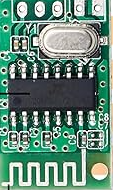
 Design with 5V Bluetooth Audio Receiver in Cirkit Designer
Design with 5V Bluetooth Audio Receiver in Cirkit DesignerIntroduction
The 5V Bluetooth Audio Receiver is an electronic component designed to wirelessly receive audio signals via Bluetooth technology. It is commonly used in a variety of applications such as wireless speakers, car audio systems, headphones, and home entertainment systems. This receiver operates on a 5V power supply, making it compatible with many consumer electronics and DIY projects, including integration with microcontrollers like the Arduino UNO.
Explore Projects Built with 5V Bluetooth Audio Receiver
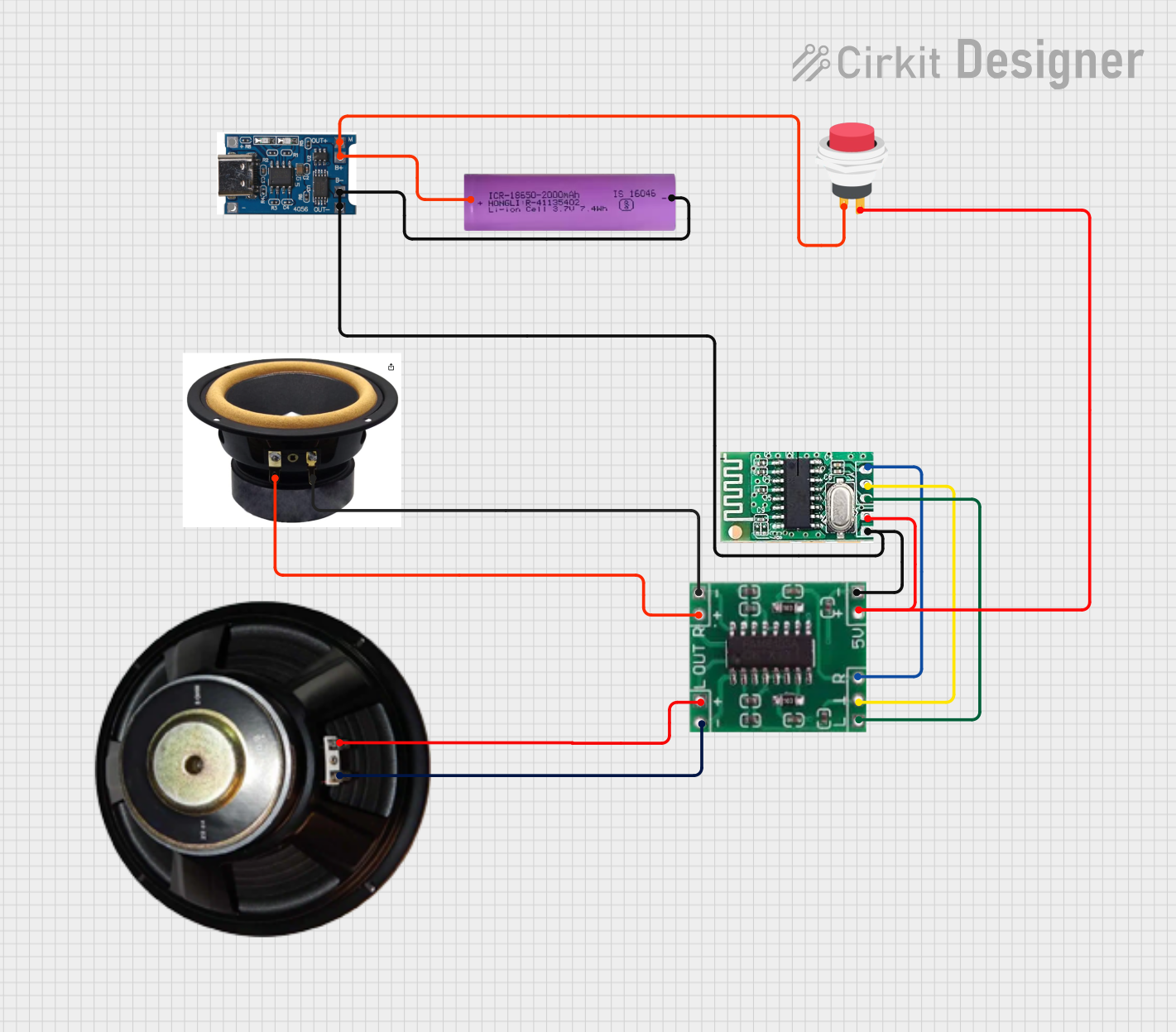
 Open Project in Cirkit Designer
Open Project in Cirkit Designer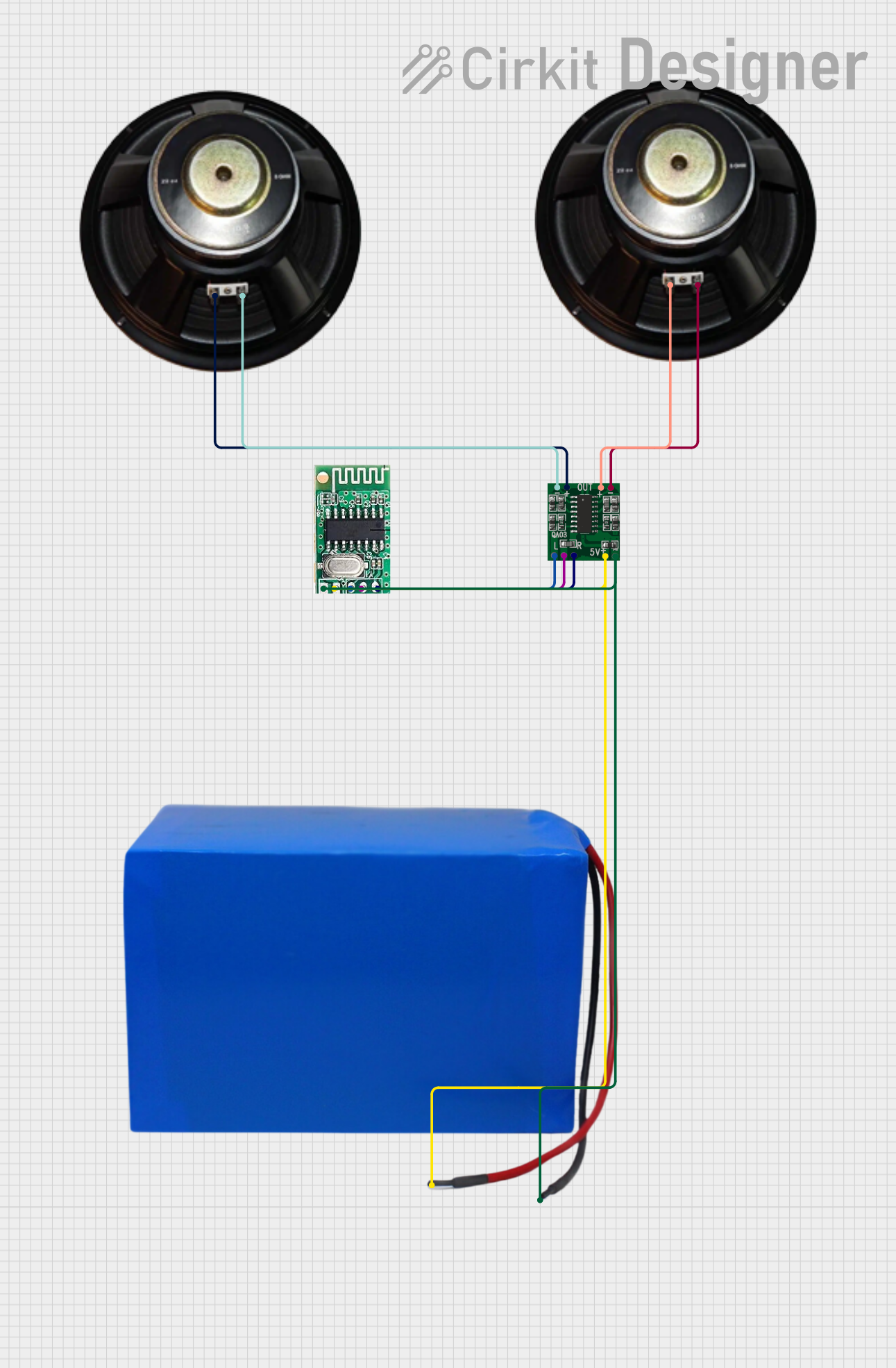
 Open Project in Cirkit Designer
Open Project in Cirkit Designer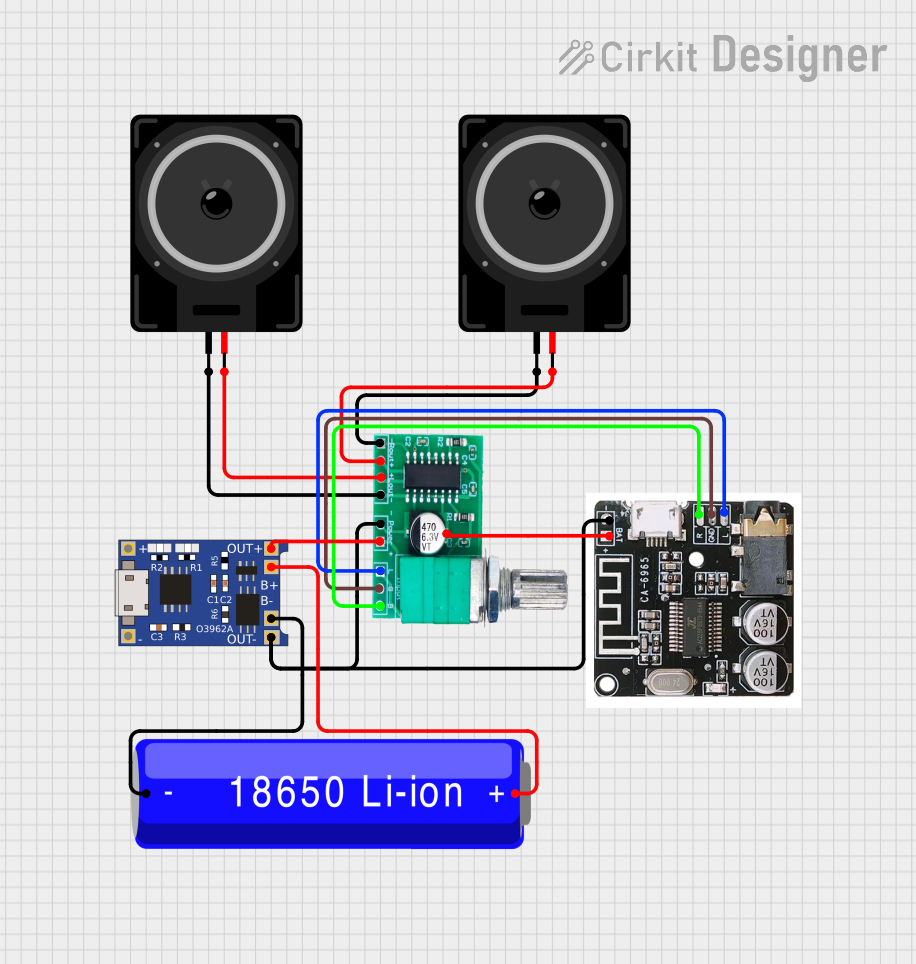
 Open Project in Cirkit Designer
Open Project in Cirkit Designer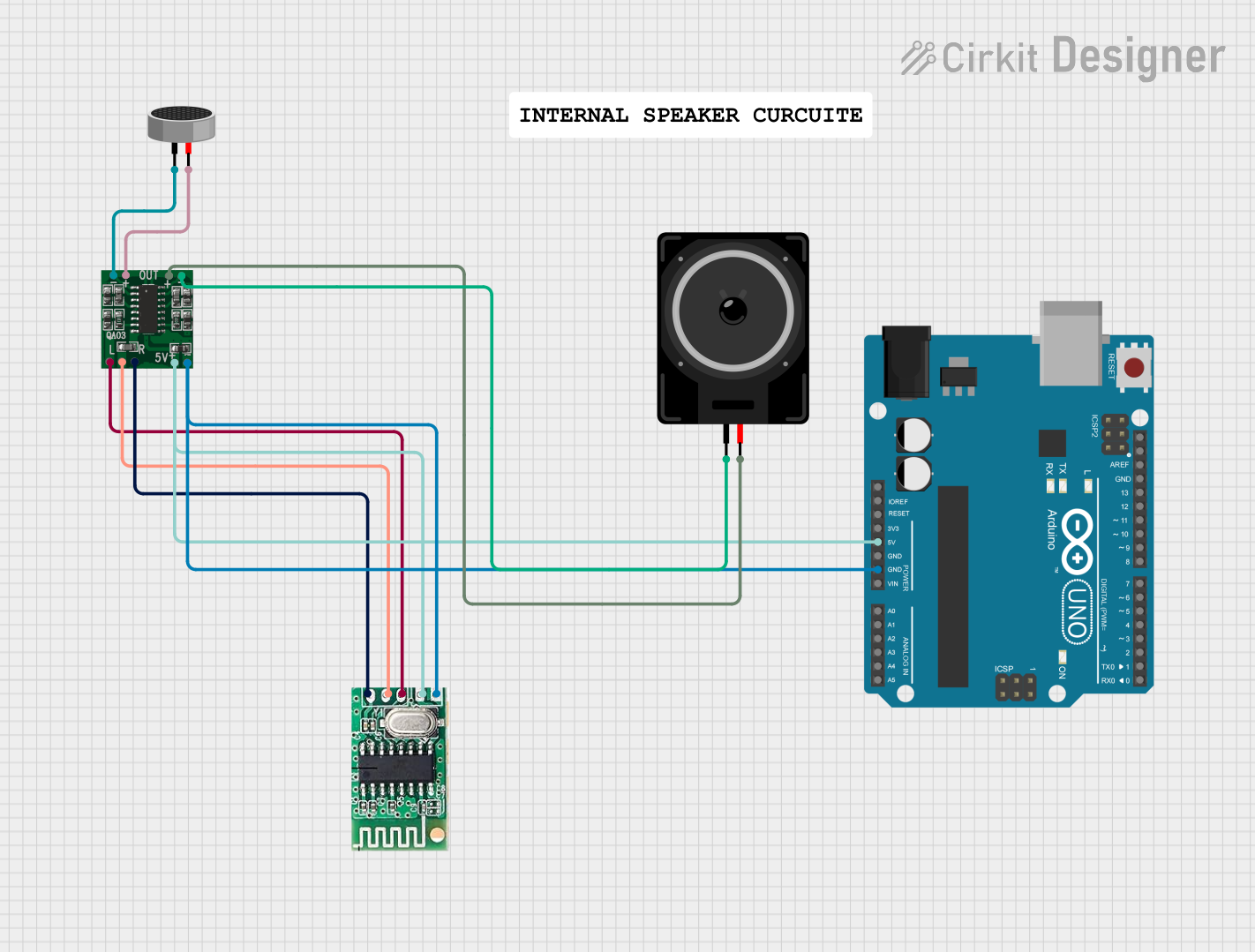
 Open Project in Cirkit Designer
Open Project in Cirkit DesignerExplore Projects Built with 5V Bluetooth Audio Receiver

 Open Project in Cirkit Designer
Open Project in Cirkit Designer
 Open Project in Cirkit Designer
Open Project in Cirkit Designer
 Open Project in Cirkit Designer
Open Project in Cirkit Designer
 Open Project in Cirkit Designer
Open Project in Cirkit DesignerTechnical Specifications
General Specifications
- Bluetooth Version: 4.0 (or higher)
- Supply Voltage: 5V DC
- Operating Current: 30-50mA
- Operating Temperature: -10°C to +50°C
- Audio Output: Stereo, can drive 3W speakers directly
- Frequency Range: 2.4GHz - 2.480GHz
- Sensitivity: -85dBm at 0.1% BER
- SNR: ≥75dB
- THD+N: -0.1%
- Range: Up to 10 meters (without obstacles)
Pin Configuration and Descriptions
| Pin Number | Name | Description |
|---|---|---|
| 1 | VCC | Connect to 5V power supply |
| 2 | GND | Ground connection |
| 3 | L_OUT | Left channel audio output |
| 4 | R_OUT | Right channel audio output |
| 5 | KEY | Active low pairing button input |
| 6 | LED | Status indicator output (blinks during pairing) |
Usage Instructions
Connecting to a Circuit
- Power Supply: Connect the VCC pin to a 5V power source and the GND pin to the common ground.
- Audio Output: Connect the L_OUT and R_OUT pins to the respective inputs of an audio amplifier or directly to speakers if the receiver supports driving them.
- Pairing Button: Optionally, connect a momentary push button to the KEY pin for initiating pairing mode.
- Status LED: Connect an LED through a current-limiting resistor to the LED pin to visualize the receiver's status.
Best Practices
- Ensure that the power supply is regulated and does not exceed 5V to avoid damaging the receiver.
- Keep the receiver away from sources of interference, such as Wi-Fi routers or microwave ovens.
- For optimal audio quality, use shielded cables for connections to the audio output.
- When integrating with an Arduino or similar microcontroller, ensure that the Bluetooth receiver is powered separately if the microcontroller cannot provide sufficient current.
Example Arduino UNO Connection
// No specific code is required for the basic operation of the Bluetooth Audio Receiver.
// However, if you wish to control or monitor the receiver using an Arduino UNO, you can
// read the status of the pairing button or control the status LED.
const int pairingButtonPin = 2; // Connect to KEY pin of the receiver
const int statusLedPin = 13; // Connect to LED pin of the receiver
void setup() {
pinMode(pairingButtonPin, INPUT_PULLUP);
pinMode(statusLedPin, OUTPUT);
}
void loop() {
// Read the state of the pairing button
bool isPairing = !digitalRead(pairingButtonPin); // Active low button
// If the button is pressed, blink the LED
if (isPairing) {
digitalWrite(statusLedPin, HIGH);
delay(250);
digitalWrite(statusLedPin, LOW);
delay(250);
} else {
digitalWrite(statusLedPin, LOW);
}
}
Troubleshooting and FAQs
Common Issues
- No Audio Output: Ensure that the receiver is properly powered and that the audio cables are securely connected.
- Unable to Pair: Make sure the receiver is in pairing mode and that it is not already paired with another device.
- Poor Audio Quality: Check for sources of interference and ensure that the audio cables are of good quality and properly shielded.
FAQs
Q: Can the receiver be used with devices other than an Arduino? A: Yes, the receiver can be used with any compatible device that provides a 5V power supply and can process the audio output signals.
Q: How do I put the receiver into pairing mode? A: Typically, you would press and hold the connected pairing button for a few seconds until the status LED begins to blink rapidly.
Q: What is the maximum range of the Bluetooth connection? A: The receiver has a range of up to 10 meters in open space, but this can be reduced by walls and other obstacles.
Q: Can the receiver connect to multiple devices at once? A: Most Bluetooth audio receivers can only maintain a connection with one device at a time.
For further assistance, consult the manufacturer's datasheet or contact technical support.